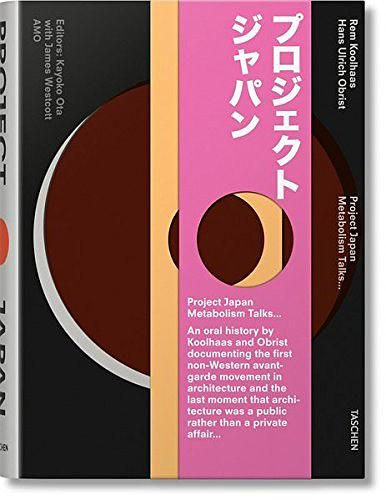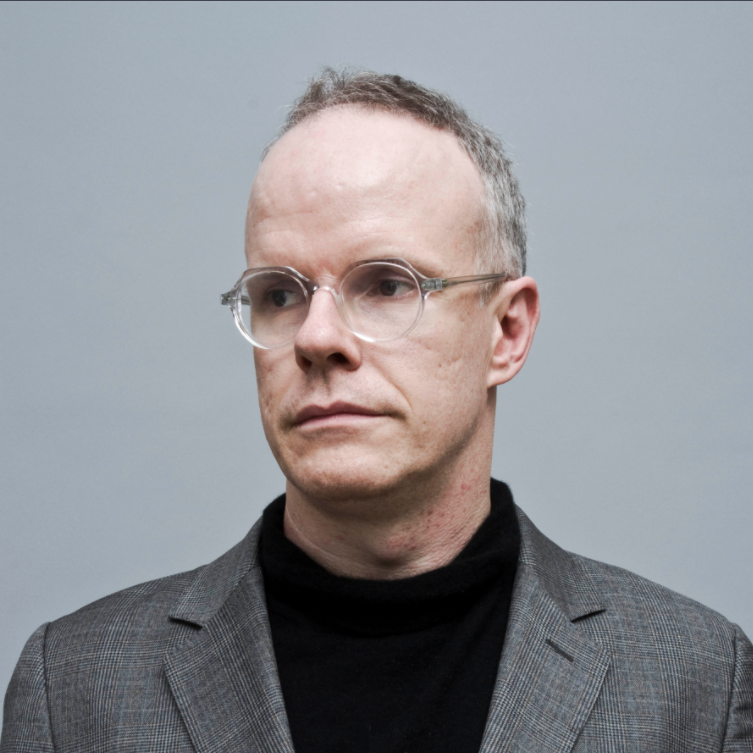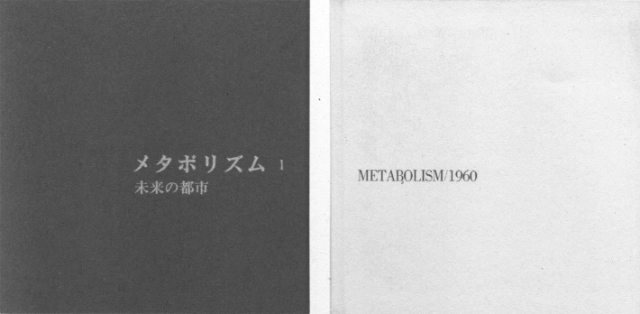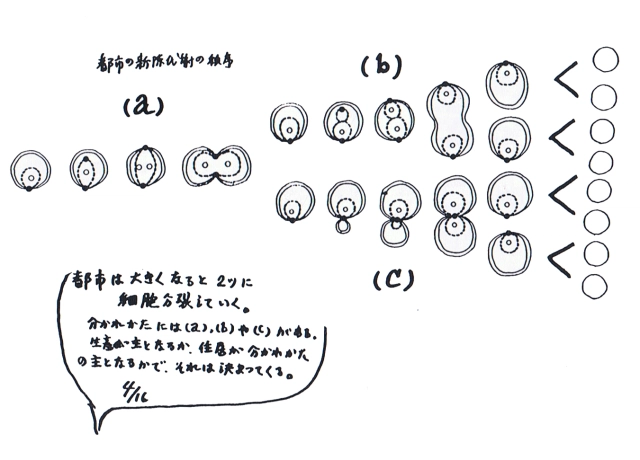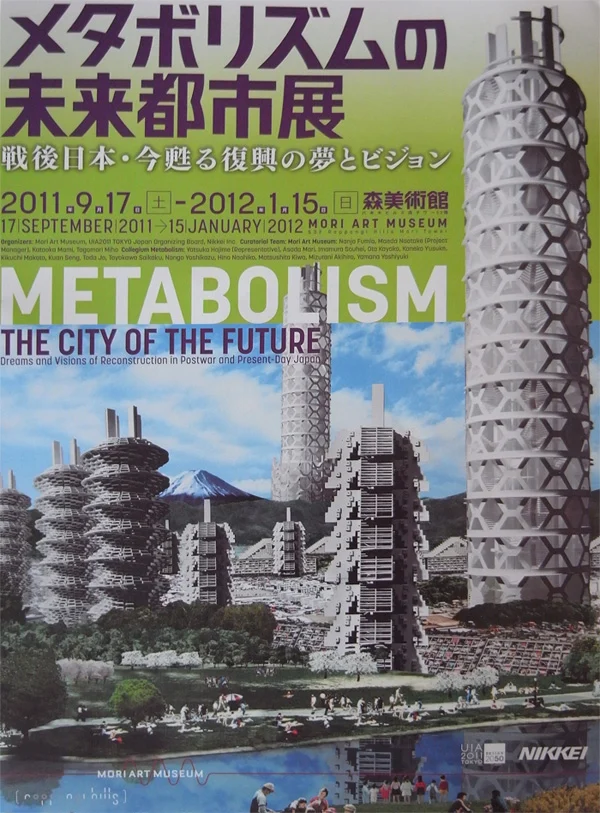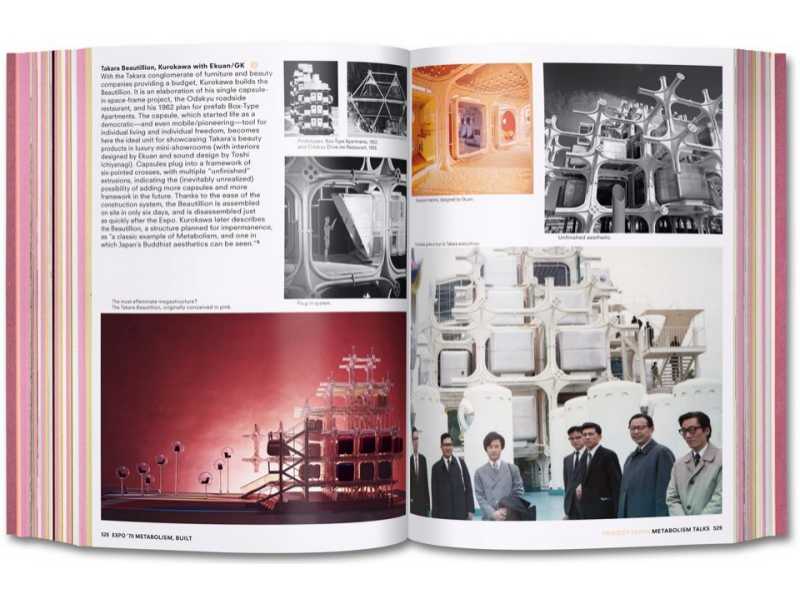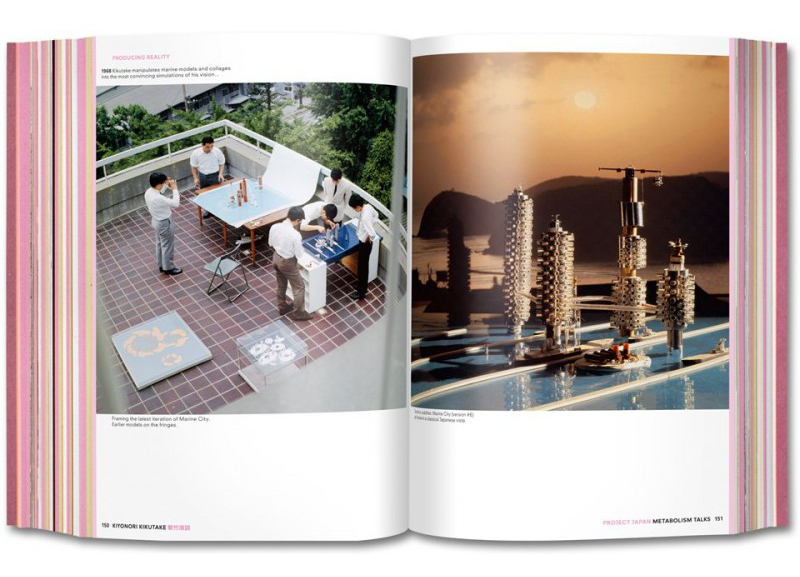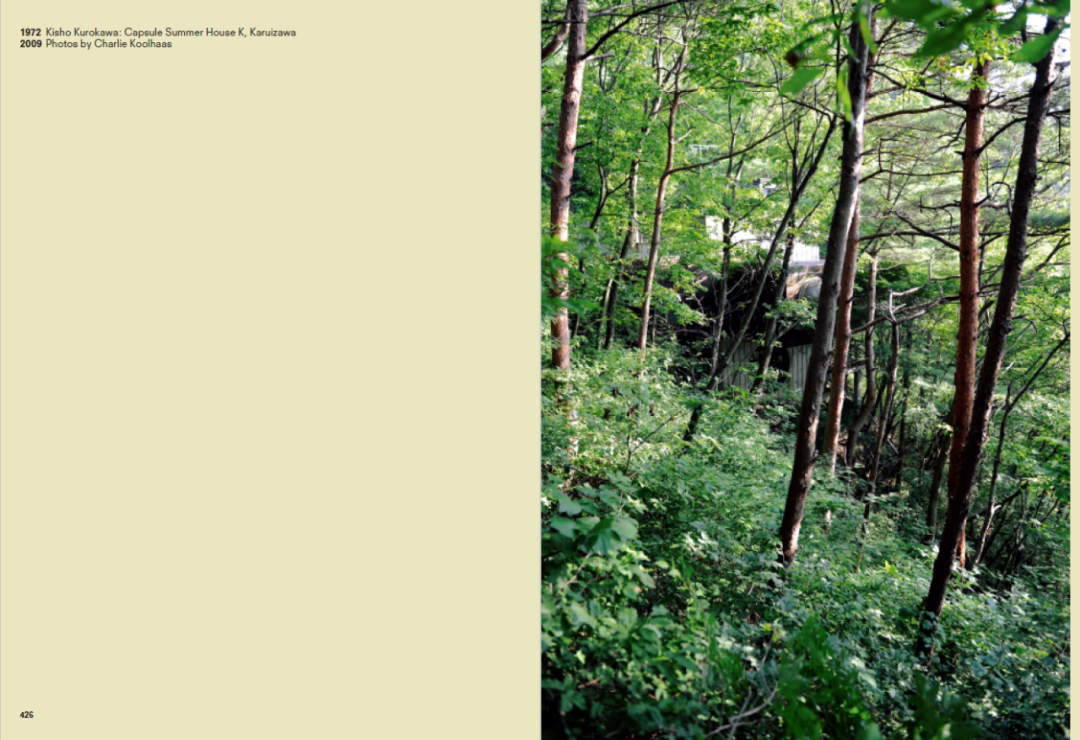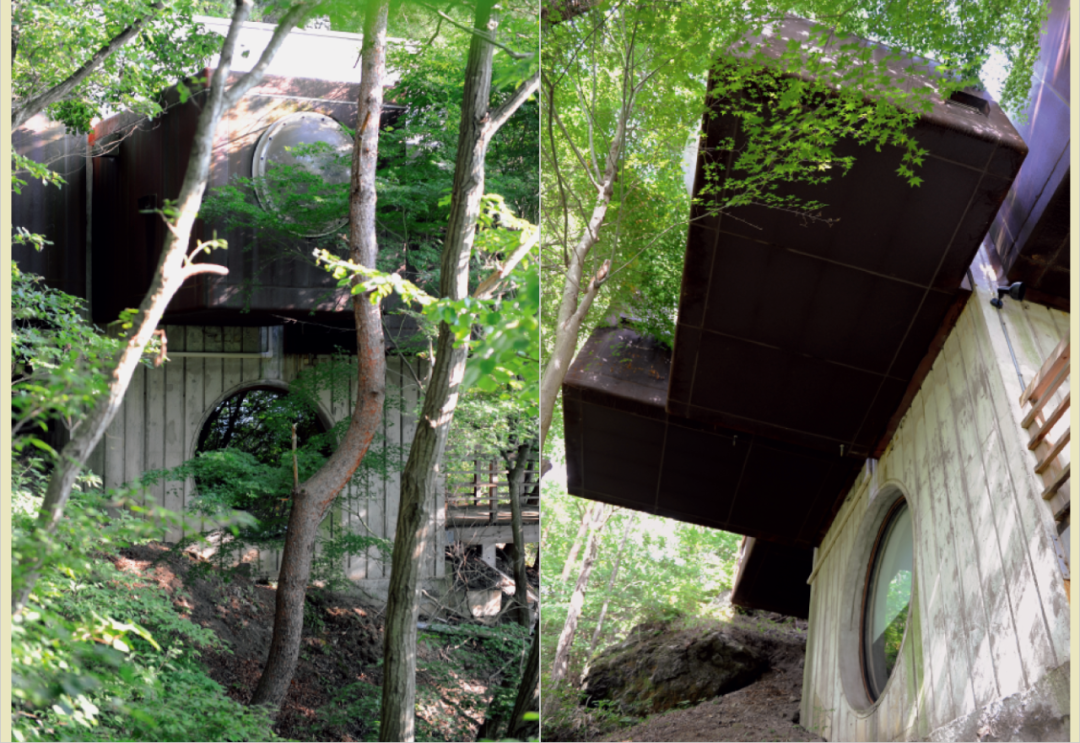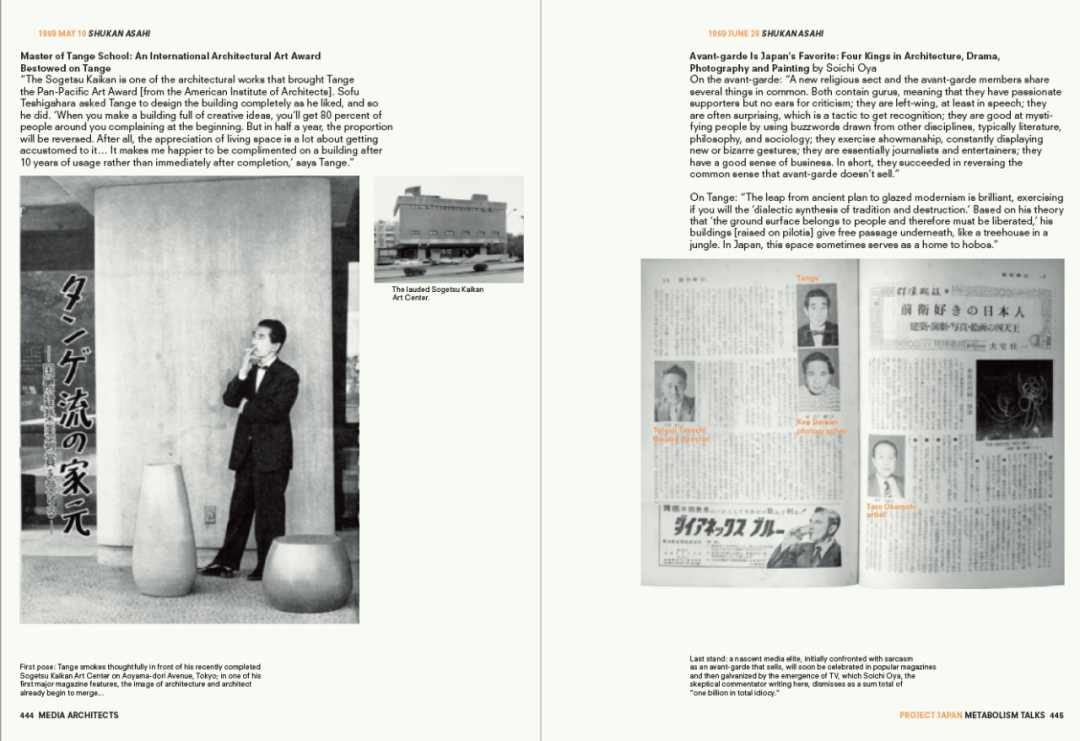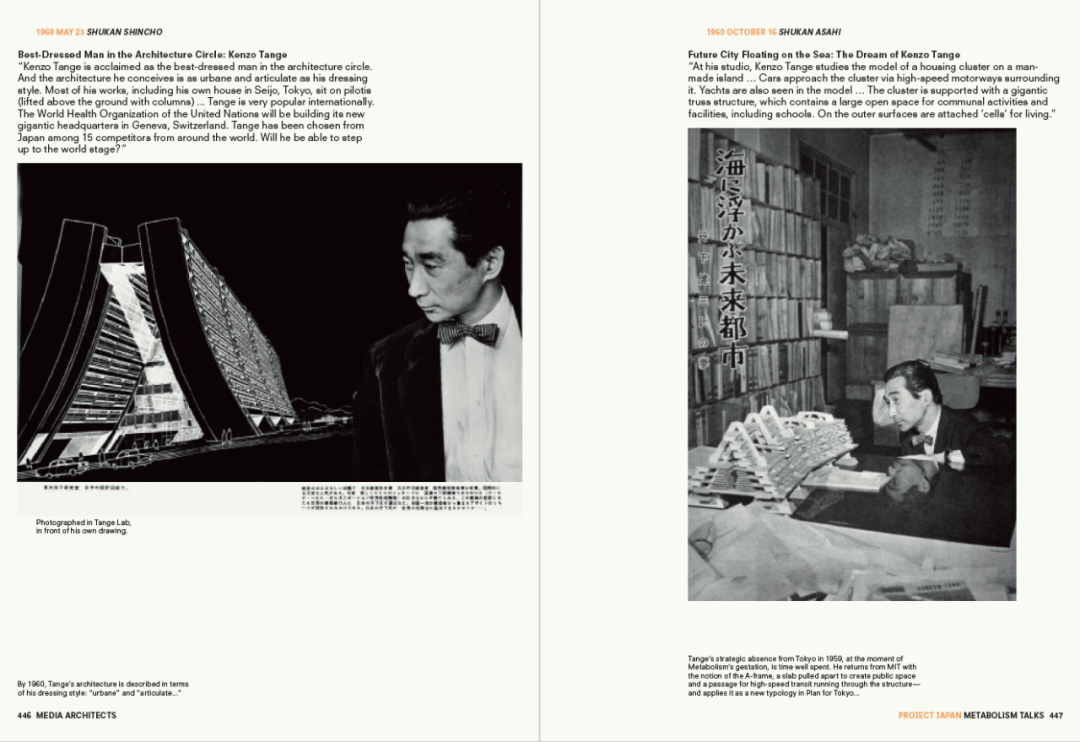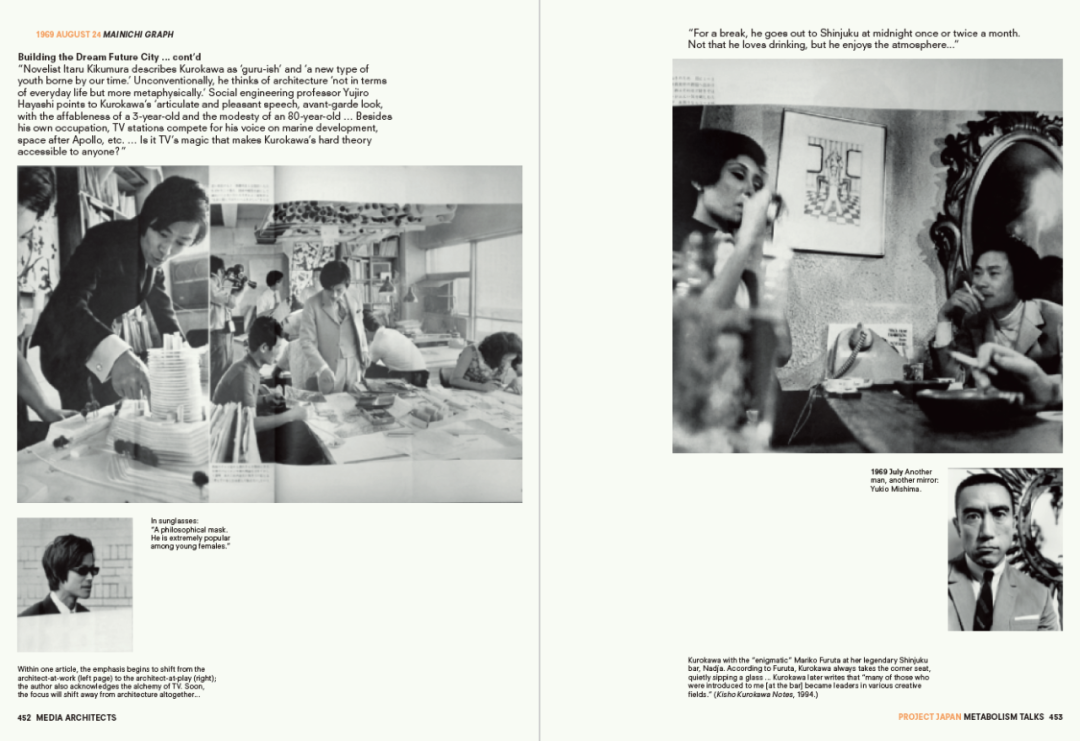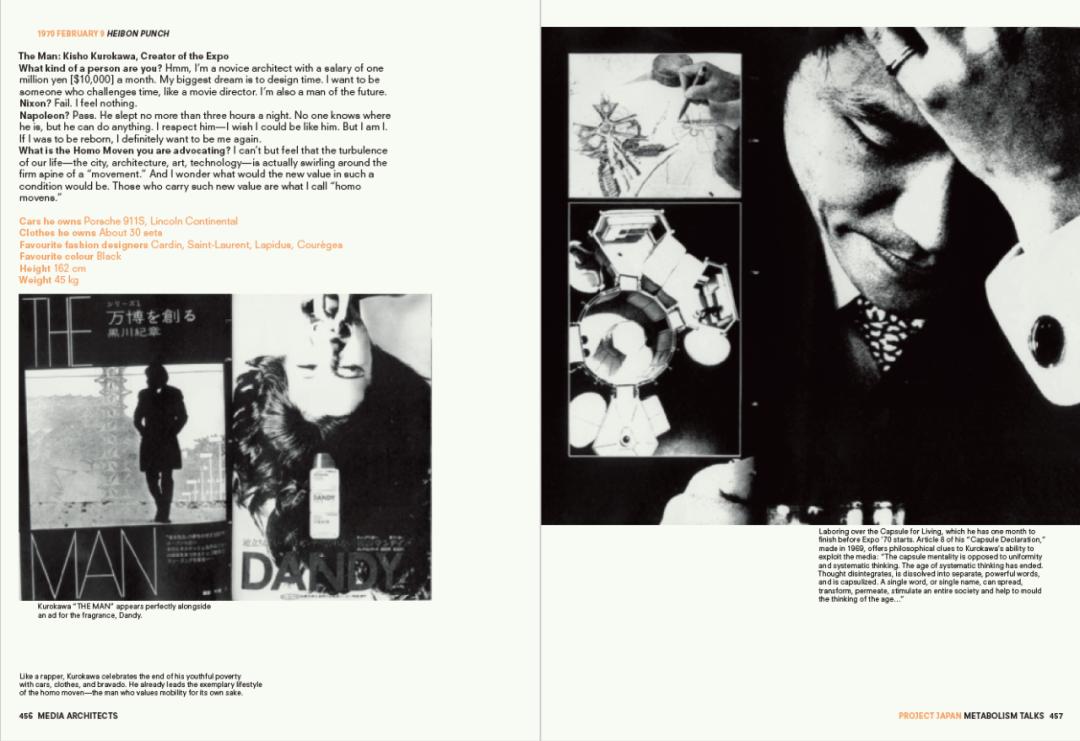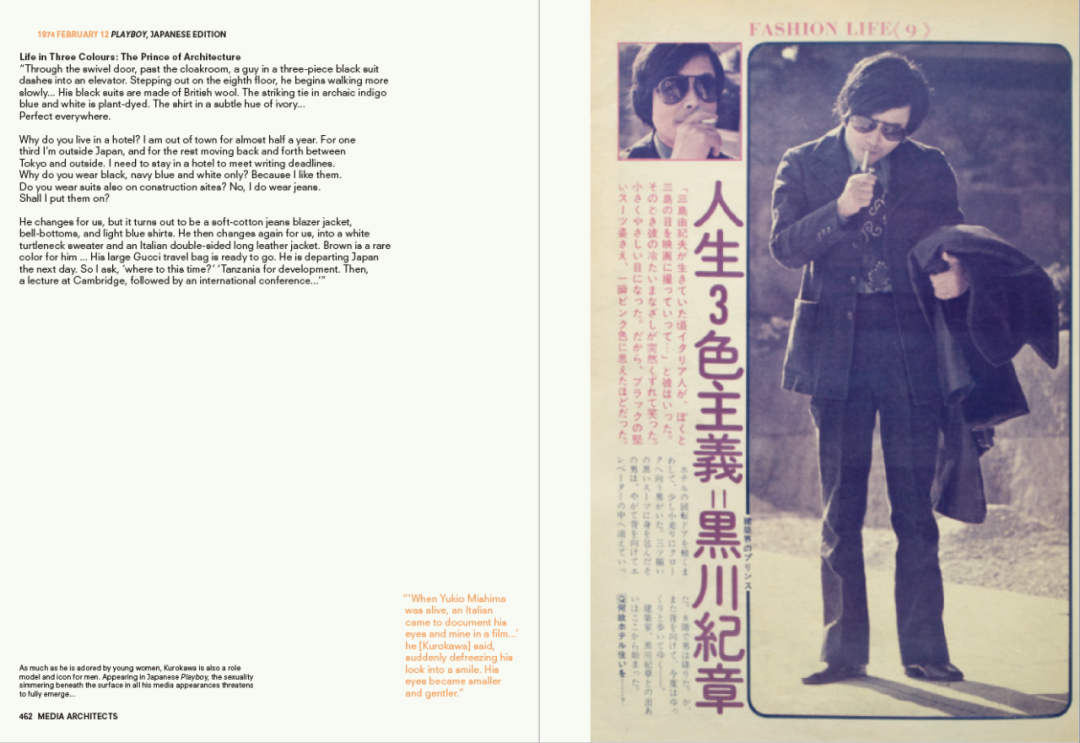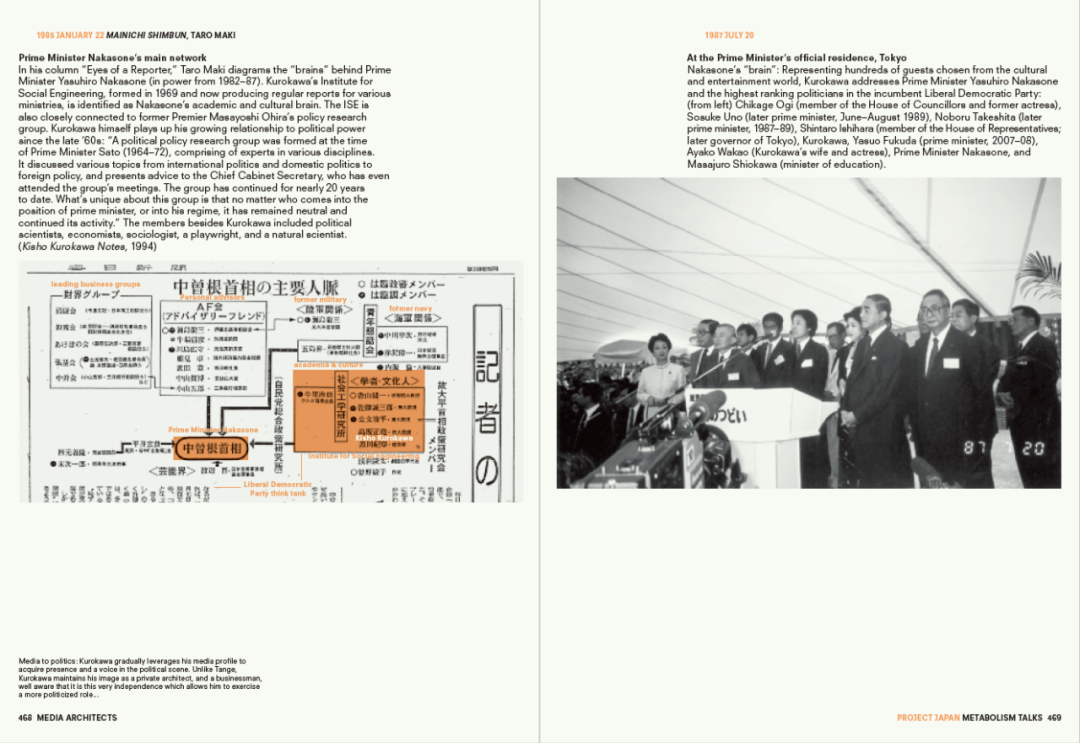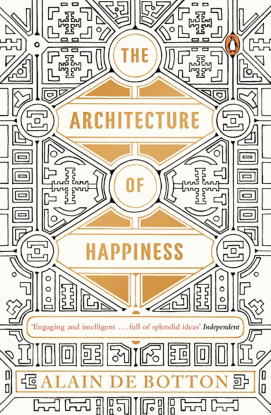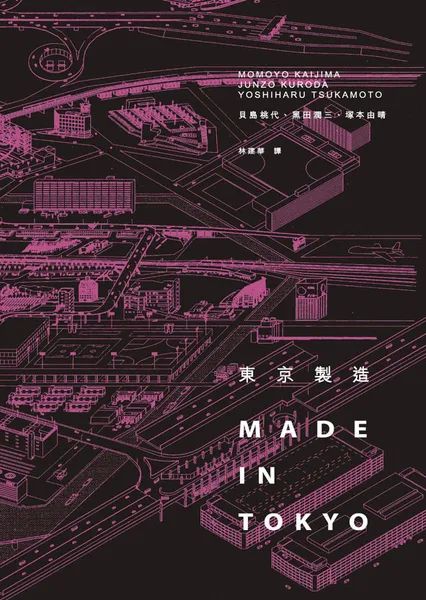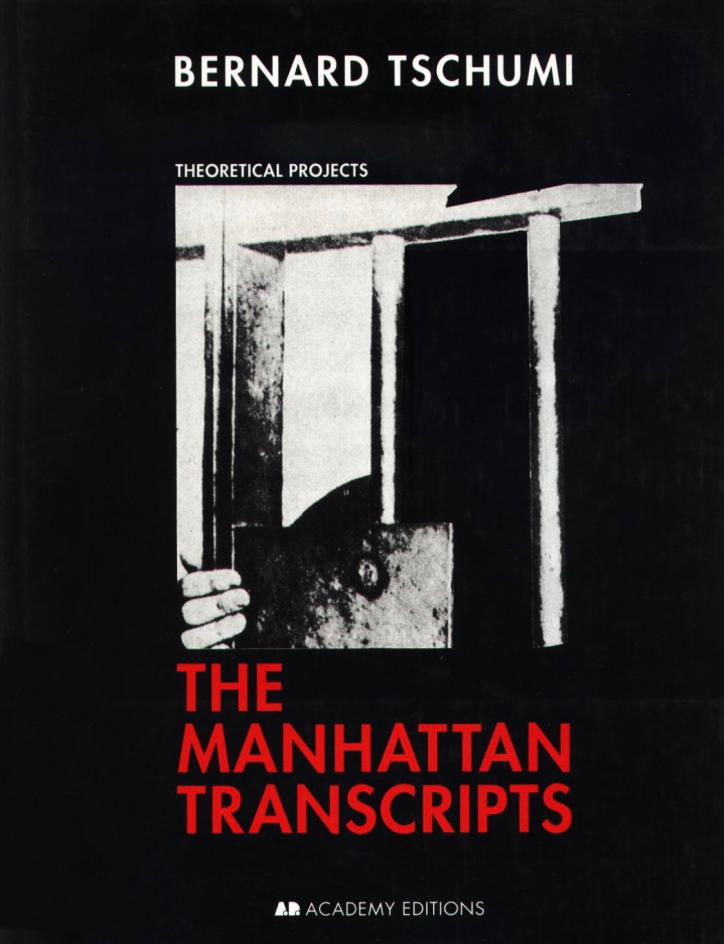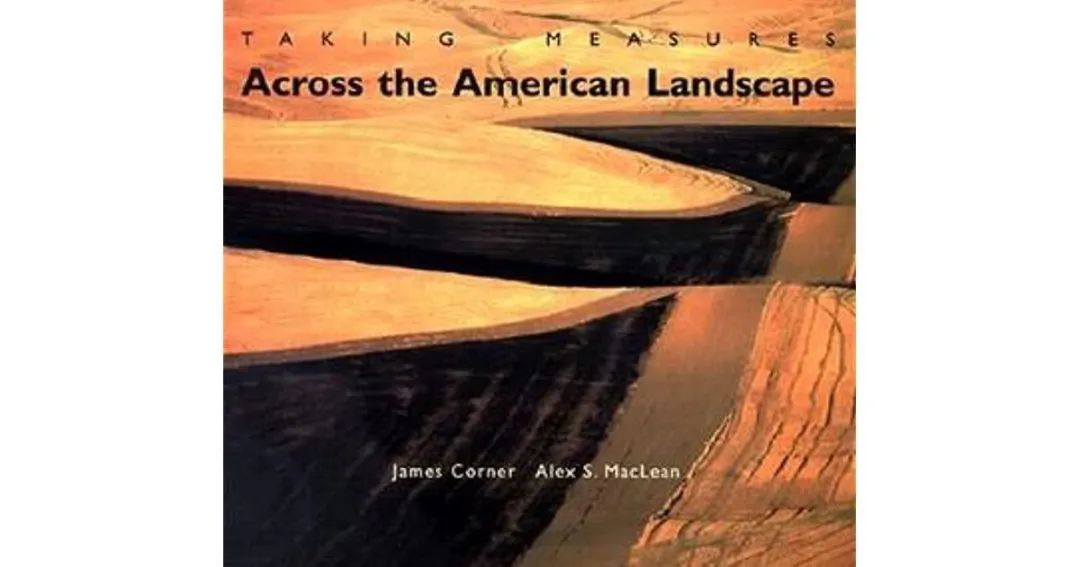
日本计划

Project Japan
雷姆·库哈斯 Rem Koolhaas 1944年出生于荷兰鹿特丹,荷兰建筑师,OMA的首席设计师,哈佛大学设计研究所的建筑与城市规划学教授。早年曾做过记者和电影剧本撰稿人。
“我喜欢强调问题”,作为一名备受争议的建筑师,库哈斯似乎不太关注建筑的“个体属性”,“很多建筑师只强调建筑,可能很有质感,但也仅此而已”,库哈斯仍保留着作为记者的社会触觉——认为建筑是城市的衍生品,思考着建筑如何回应社会问题。

汉斯·乌尔里希·奥布里斯特 Hans Ulrich Obrist 出生于1968的苏黎世,是活跃在当代艺术领域内的成果最丰厚、影响力最大的策展人之一。曾任巴黎现代艺术博物馆当代艺术策展人,2006年起任伦敦蛇形画廊艺术总监,2009年成为英国皇家建筑师学会名誉会员,同年被英国权威艺术杂志《艺术观察》评为艺术界最有影响力的人。
在1960年5月东京召开的世界建筑师大会期间,日本青年建筑师,包括菊竹清训、黑川纪章、大高正人、桢文彦等,成立了在世界范围内引起极大反响的“新陈代谢派”(Metabolism)。
1960 MAY World Design Conference, Tokyo:"OUR CENTURY: The Total Image. What designers can contribute to the human environment of the coming age"
在会议期间,新陈代谢派制作了一本类似于宣言的小册子,“Metabolism 1960: The Proposal for New Urbanism”。其中包含了团队的主要概念—— 城市不停地改变与生长,如同“新陈代谢”作为生命运动的法则,城市的变化也是基于一种能量交换,生命与周遭环境的能量交换。
Metabolism 1960: Proposals for a New Urbanism
库哈斯认为,“新陈代谢派”运动(Metabolism Movement)是最后一场改变建筑界的运动。在Project Japan这本书中,通过访谈、考察、历史资料收集,以“主要成员的访谈”与“大事件”两部分作为线索,详尽地重构了这场运动的历史——包括其目的、革命性内容、机器引爆的后果以及对全球范围内造成的影响。
首先,只要对“新陈代谢派”运动(Metabolism Movement)一些基本的认知,都一定对中银舱体大楼(Nakagin Capsule Tower)、Big Roof at Expo '70 in Osaka、山梨文化会馆(Yamanashi Press Center)等项目有印象,对“随着时间变化的机械巨构乌托邦”的“热衷”,似乎是这场运动或该团体最显著的特征。但是,在50-70年代,世界各地涌现的建筑先锋运动中,并不乏对大跨度框架,实现自由装配立体空间的探索。
中银舱体大楼(Nakagin Capsule Tower)
库哈斯在2011东京“新陈代谢——城市未来” (‘metabolism – the city of the future’)展览里有提及为什么会选择研究“新陈代谢派”运动(Metabolism Movement)。
纵观全球,我个人认为日本的建筑水平高于世界其他地区。究其缘由,答案是很显著的:相较于世界其他地区缺乏互相交流甚至互相竞争的建筑师,当代日本建筑师是一个团体。
‘If I look at the global situation now, it’s my personal conviction that the level of architecture in japan is higher than in rest of the world. and if you were to think why that is so, the answer is obviously because there has been the presence of a group of architects that were exceptionally gifted, and who also worked together as a group. if you look at the current landscape of architecture around the world, you see a number of individuals, and those individuals almost never talk to each other. in fact, they’re constantly competing with each other and there is not even a remote sense of an architectural community.
此外,显然,文化主动性正逐步从西方转移到亚洲。因而,我认为,研究积极参与西方建筑霸权终结的代谢主义者们是如何成功地确立自己地位的,是很有趣的。
Moreover, it is very clear that the initiative in culture is now switching from the west to Asia. and for that reason, I think it’s very interesting to look at how the Metabolists, who actively participated in the ending of the western hegemony of architecture, succeeded in establishing their position.’
如果你看看黑川纪章的作品,他对“新陈代谢”(metabolism)的解读,并非以此线性地驱动越来越大规模的项目落成,而是在设计方案中化用“新陈代谢”(metabolism)中循环、生长等生物属性,这些想法涉及如何使用自然或建筑如何可持续,这是建筑学中目前的主要问题。
‘… if you look at the work of Kurokawa for instance, he seems to read metabolism not as a linear push for ever bigger and larger projects, but more as an ability to transform at the biological level. I think that he put forward many ideas that are very subtle in terms of how nature could be used or how architecture could be sustainable, ideas which are major issues in architecture now.
再者,目前全球范围内的发达国家处于停滞状态,与此同时,发展中国家在高速发展。在这个层面上来讲,城市建设仍迫切需要考虑的,不仅是如何适应这样的增长速度,还需要讨论如何更高效适应城市发展。从这个角度看,我相信“新陈代谢”(metabolism)这样的运动是非常具有研究价值的。
But more to the point, while the half of the world consisting of developed countries is in a process of stagnation, the other half continues to grow incredibly quickly. and in that sense, I’d say that there’s still an urgent necessity today to think about how to not only accommodate growth, but to channel it in a way that is productive. from this point of view too, I believe looking at a movement like metabolism is very important.’
英文原文引用自:https://www.designboom.com/architecture/rem-koolhaas-project-japan-metabolism-talks/
“新陈代谢”(metabolism)运动,作为一个团体而言,是日本建筑师们在国际上为自身争取更多话语权、更高的社会地位的尝试,关注的问题是世界范围内共同需要面对的——如何高效且可持续地应对城市发展;在各自的探索中,每一位建筑师凭借各自对“新陈代谢”(metabolism)的理解,通过探索如何结合西方“二元论”导向的新技术与日本传统建筑中的“模糊时间边界的暧昧”的精神内核,发展出一套当代日本建筑师特有的话语体系。
交叉学科的讨论、新科技应用如何与在地文化的延续有机融合,如今在建筑领域仍有很大的研究空间,即便如今看来,“新陈代谢”(metabolism)对科技的拥抱过于乐观,对社会的未来构想也因历史局限而有所误读,但“新陈代谢”(metabolism)运动仍是这些探索的范式。
Project Japan集合了该运动丰富的历史资料、与各位建筑师的深度的访谈,对于这些研究领域感兴趣的设计师而言,是一本很有阅读价值的书籍。

书中涉及访谈、历史资料的整理等,因而作者以“新陈代谢”(metabolism)运动成员为划分,每部分包含库哈斯、汉斯与建筑师的访谈,加上与该建筑师相关的事件等的整理。
如果回顾丹下健三和川添登在50年代的探索,他们认为伊势神宫是日本建筑的代表,事实上,这是关于现代主义对传统建筑原型的溯源——关于天然材料介入功能设计,关于预制的概念。他们是在寻求传统中的现代性吗?
不是的,他们从传统建筑对现代性的溯源是从哲学思想层面,而非形式。当然,有些传统是可见的。但这里重要的是,我们认为我们的传统和哲学是无形的,这与西方哲学大相径庭。欧洲的思维方式植根于物质文明,所以他们总是在谈论可见的传统。
唯物主义的秩序感。我们谈论伊势神宫,是以其作为一个无形的延续:每20年可见的部分-建筑,会进行重建。我们的传统已经保持了1,200年,即便建筑材料总是被更新的。我们说这是一座非常古老的传统建筑,但与雅典卫城的物质保护有着本质上的不同;在日本,在明治维新时期,我们开始在服饰、宪法、教育和建筑方面复制西方文化,一切都模仿欧洲模式。我强烈反对这种态度。现代化不应该意味着复制欧洲文化。但从19世纪开始,所有发展中国家都试图模仿西方。这是发展技术和经济的一种行之有效的方式,日本成功地复制了欧洲的方式。但现在,中国、新加坡、马来西亚和其他亚洲国家不再认为抄袭欧洲是实现现代化的最佳方式。我们需要的是全球主义和地方主义之间的共生哲学。我们必须让多元文化共生,而不是让我们的未来成为现代化的霸权竞争。既不是伊斯兰原教旨主义,也不是种族中心主义;它应该是一个全新的世界。

If one looks at Tange and Kawazoe’s interests in the ‘50s, drawing on Ise as a prototype for Japanese architecture, it actually explains retrospectively that they found modernist themes in the traditional Ise prototype- the use of natural materials for functional design, the whole notion of prefabrication. Were they seeking modernity within tradition?
No, Finding modernity in philosophy, not in style. There are, of course, traditions that are visible. But what’s important here is that we conceive of our tradition and philosophy as invisible, which is very different from Europeans. The European way of thinking is rooted in materialistic civilization, so they’re always talking about visible traditions.
A materialistic sense of order. We were talking about Ise as an invisible continuity: every 20 years the visible- the architecture- is rebuilt. We say the tradition has been maintained for 1,200 years, though the material is always new. We say it’s a very old, traditional building, but we mean something essentially different from the material preservation of the Acropolis;In Japan, during the Meiji Restoration, We started to copy Western culture in dress, constitution, education, and architecture- everything mimicked European models. I am strongly against this attitude. Modernization should not mean copying European culture. But from the 19th century on, all developing countries tried to copy the West. It was a proven way to develop technology and the economy, and Japan succeeded in copying the European way. But now China, Singapore, Malaysia, and other Asian countries no longer believe that copying Europe is the best way to modernize. What we need is a philosophy of symbiosis between globalism and localism. Instead of leaving our future to a hegemonic competition for modernization, we must let diverse cultures flourish symbiotically. Neither Islamic fundamentalism nor ethnocentrism; it should be a whole new world.
Tange and Kurokawa create and exploit the spotlight
在这个章节里,整理了当时两位建筑师在各种媒体上的曝光与报道,从这个层面上,客观地观测他们对社会的“宣言”的同时,也理解社会对他们的评判。

